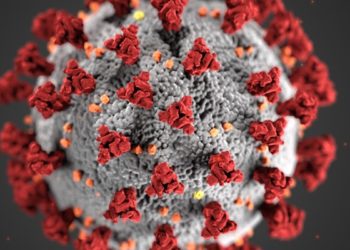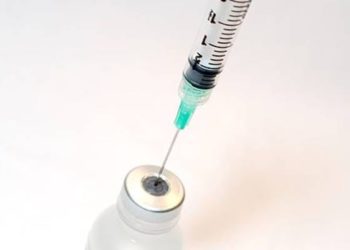Risk factors for SARS-CoV-2 seropositivity in health care workers
1. Residence in a community with coronavirus disease 2019 (COVID-19) incidence, direct community contact with a positive case, and Black race were associated with a greater risk of infection.
2. No statistically significant difference was observed with regard to any occupational risk factors in the base case analysis.
Evidence Rating Level: 2 (Good)
Study Rundown: While occupational exposure to infected patients and colleagues is commonly believed to be a driving force behind severe acute respiratory syndrome coronavirus 2 (SARS-CoV-2) seroprevalence in health care workers (HCWs), little concrete evidence exists regarding the relative contributions of workplace versus community risk factors toward infection rates. This study involving the Emory healthcare system aimed to clarify the roles of occupational, community, and demographic risk factors. After sampling over one-third of the entire workforce, the study found that community exposure and race were most strongly associated with seropositivity. Health care workers working in clinical locations had numerically greater odds of being infected. Further, HCWs who identified as Black were more than 2 times as likely to be seropositive than those who identified as White. Like its predecessors, this study was limited by participation bias as well as the challenges in classifying personnel who may have worked in multiple roles and locations or were confronted with rapidly changing infection control guidelines. Nonetheless, these findings may aid in the optimization of strategies to continue protecting HCWs in the ongoing pandemic.
Click here to read the study in Annals of Internal Medicine
Relevant Reading: Prevalence of SARS-CoV-2 antibodies in health care personnel in the New York City area
In-Depth [cross-sectional study]: Of the approximately 30,000 employees and staff in the Emory healthcare system, 10,275 (35%) participated in voluntary serological testing from 19 April through 26 June 2020 at seven centers throughout the Atlanta, GA metropolitan area. The enzyme-linked immunosorbent assay had an estimated sensitivity of 97.5% and specificity of 98.0%. Demographic information and data regarding the use of personal protective equipment and potential exposures were also collected. Less than one-quarter of participants were male, and less than one-third were Black despite comprising nearly half of the workforce. Among all participants, the adjusted seroprevalence was 3.8% (95% confidence interval [95% CI], 3.4% to 4.3%). Race (adjusted odds ratio [aOR] for Black vs. White, 2.1; 95% CI, 1.7 to 2.6), contact with a person known or suspected to have COVID-19 outside the workplace (aOR, 1.9; CI,1.4 to 2.6), and higher residential ZIP code incidence of COVID-19 (aOR, 1.5; CI, 1.0 to 2.2) were most strongly associated with seropositivity. A number of occupational risk factors were also numerically related to seropositivity, including close contact with a COVID-19–positive HCW (aOR, 1.2; CI, 0.9 to 1.6) and working in clinical locations such as the emergency department (aOR, 1.5; CI, 0.9 to 2.7), inpatient non–COVID-19–focused areas (aOR, 1.4; CI, 0.8 to 2.3), or COVID-19–focused units (aOR, 1.6; CI, 0.9 to 2.7). However, workplace role did not appear to be correlated with seropositivity after adjusting for demographic factors (aOR for respiratory therapists, 0.9; CI, 0.3 to 2.5).
Image: PD
©2021 2 Minute Medicine, Inc. All rights reserved. No works may be reproduced without expressed written consent from 2 Minute Medicine, Inc. Inquire about licensing here. No article should be construed as medical advice and is not intended as such by the authors or by 2 Minute Medicine, Inc.









